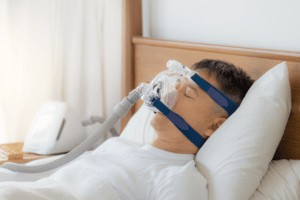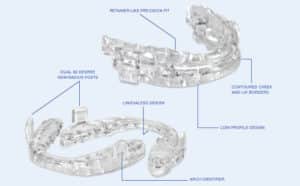4 Options for Treating Obstructive Sleep Apnea


If you were recently diagnosed with obstructive sleep apnea (OSA), you might be relieved to finally know the reason behind your chronic fatigue and mental fog. OSA could even be the cause of your headaches and migraines, high blood pressure, balance issues, weight gain, and mood changes.
Sleep apnea occurs when the muscles around your tongue and throat relax in such a way that airflow to your lungs is restricted while you sleep. It’s important to discuss possible treatment options with your doctor as soon as you receive a diagnosis. Depending on your situation, you may also need your dentist’s help with treating obstructive sleep apnea. Here are four available treatment options.
CPAP Machine
A highly effective method for treating obstructive sleep apnea is to wear a continuous positive airway pressure (CPAP) machine while you sleep. This blows a constant stream of air down your throat to help keep your airways open. Along with combating sleep apnea, CPAP also eases snoring and improves sleep quality.
The problem with a CPAP machine is that many people have trouble growing accustomed to it. The small, lightweight machine sits on your nightstand. A large tube connects it to a mask that fits over your nose and mouth. Some side effects of using a CPAP machine include dry mouth, nasal congestion, nosebleeds, stomach bloating, chest discomfort, and feelings of confinement while wearing the mask.
Because of the drawbacks of CPAP machines, your doctor may choose to prescribe this method only if you have severe obstructive sleep apnea. Other less obtrusive options are available if you have mild to moderate OSA.
Mandibular Advancement Device
A popular alternative to the CPAP machine is to wear a mandibular advancement device (MAD). This mouth device is custom-made by your dentist. It resembles a mouth guard worn to protect your teeth while playing sports. The device snaps over your upper and lower teeth with the intent of easing the lower jaw forward slightly. The goal is to keep your tongue and other tissues at the back of your mouth in a more taut position. This way, they can’t restrict your airway when your muscles relax as you sleep.
A few different types of MADs are available today. Dr. Ania offers the MicrO2 Sleep Device, which we believe is the most advanced, effective oral appliance for treating mild to moderate obstructive sleep apnea. The MicrO2 is the only sleep apnea device made from control-cured PMMA, which makes it more durable, precise, and predictable than other oral appliances. It’s also less bulky, with a comfortable retainer-like fit that makes you more inclined to wear it every night.
In addition, the MicrO2 lacks cumbersome metal hinges that require users to turn screws or change the position of elastics. Instead, the upper and lower arches are custom-designed to fit your jaw. Then, if you need to adjust the advancement, simply remove the current upper or lower device and insert the next one in the MicrO2 series.
Be aware that some patients experience side effects from using MADs. These may include altered bite, dry lips, excessive salivation, and arthritis of the temporomandibular joint (TMJ). Once Dr. Ania fits you with a sleep apnea device, we schedule a follow-up appointment to ensure you aren’t experiencing any complications. If so, we can take steps to modify your oral device so it fits you more comfortably.
Tongue Retaining Device
Sometimes called a tongue sleeve, this plastic device sits toward the front of the mouth. It features a pocket that holds the tongue in a stuck-out position. This is an effective device for treating obstructive sleep apnea if you have a mild to moderate case, though doctors prescribe them less often than MADs. Tongue retaining devices are also marketed as an anti-snoring solution.
Surgery
Uvulopalatopharyngoplasty (UPPP) is the standard surgical procedure for treating obstructive sleep apnea. Surgery involves removing some of the soft tissue from the back of your throat. We recommend only considering UPPP if you have severe sleep apnea that drastically affects your quality of life, and if you have attempted other non-invasive options first without success.
Get Help Treating Obstructive Sleep Apnea from our Boulder Dentist
The best treatment for sleep apnea depends on the severity of your case, the physical structure of your airway, and any other medical problems you have. Still, many of our patients have had great success with the MicrO2 device. Most people also prefer wearing it over using a CPAP machine or tongue retaining device.
Dr. Ania can test you for obstructive sleep apnea with a home sleep test. Then, if suitable for your situation, our team can custom-fit you with a MicrO2 device. If you don’t tolerate CPAP, this could be the perfect alternative treatment option to try!
For more information about treating obstructive sleep apnea with an oral device, please contact our dentist office in Boulder, CO at 303-443-0998 today.




